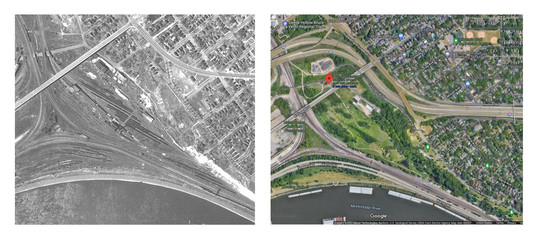|
Having trouble viewing this email? View it as a Web page.
April 4, 2022
April Weed of the Month: Urban Roots Youth Conservation Program is Restoring Degraded Habitat in St. Paul Parks
Monika Chandler, Minnesota Department of Agriculture
The Urban Roots Youth Crew said, “We can do it!” That's after David Woods pronounced a buckthorn shrub too large to pull. “They consistently rise to challenges,” said Woods, Conservation Program Director for Urban Roots. These crews face the daunting task of managing noxious and invasive weeds to restore native habitat.
 Removed buckthorn is piled for burning.
Photo credit: Urban Roots
Click here to download the photo
Urban Roots trains youth interns in leadership, entrepreneurial, and life skills through their Market Garden, Conservation, and Cook Fresh programs. Interns are 14-18 years old and hired through St. Paul’s Right Track program to work at Urban Roots. Market Garden interns participate in all aspects of running a community supported agriculture (CSA) business, from producing to selling crops. Additional produce is sold at farmers’ markets, to local restaurants, and provided for hunger relief efforts. The Conservation Program focuses on restoration. The Cook Fresh Program chefs teach interns to creatively cook seasonal produce. First year interns start in the Seed Crew where they learn the basics of their program, including paycheck management and communication with coworkers and supervisors. Subsequent year interns act as mentors and conduct outreach in the broader community.
The Conservation Program tackles numerous invasive plant infestations and restores habitat in St. Paul’s East Side. Ongoing projects include habitat restoration at Bruce Vento Nature Sanctuary and at Willowbrook Park. Conservation interns restore habitat on over 270 acres. Crews bike to their work sites then begin removing weeds such as spotted knapweed and common buckthorn. Buckthorn control has been particularly rewarding because their efforts make a visible, positive impact.
 Aerial image on the left shows a railyard in 1947 in the area that would become Bruce Vento Nature Sanctuary (right image). By the 1970s, the railyard was abandoned, and the area overtaken by weeds such as spotted knapweed. Beginning in the 1990s, a large team of organizations, including Urban Roots, restored the area to a nature sanctuary.
Photo credit:
Left image - John R. Borchert Map Library at the University of Minnesota
Right image - Maps Data: Google, © 2022
Click here to download the photo
Urban Roots interns are experimenting with new uses for woody invasive plant material. They recently inoculated 4–8 inch diameter buckthorn logs with shitake and 9-10 inch diameter Siberian elm logs with oyster mushroom spores. If all goes well, resulting delicious mushrooms will be included in a Cook Fresh Program meal. Buckthorn sculptures and jewelry are additional uses. A popular community event activity for all ages is to decorate your own buckthorn walking stick.
Visit Urban Roots website (urbanrootsmn.org) for more information and to get involved.
MEDIA: For more information on Weed of the Month, contact Allen Sommerfeld, MDA Communications, at allen.sommerfeld@state.mn.us or 651-201-6185
|